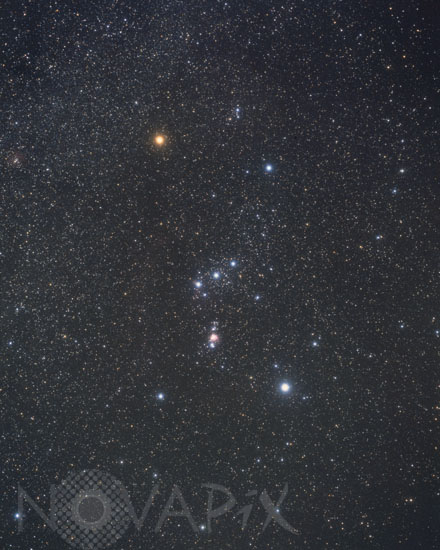Photo Agency - Astronomy - Space - Nature

Constellation of Orion
auteur: A.Fujii/David Malin Images/Novapix
référence: a-cst58-00001
Image Size 300 DPI: 40 * 51 cm
Orion the Hunter is one of the most familar and best known constellations. There is extensive and varied mythology about this beautiful collection of stars, but the most common Greek legend has Orion as a giant huntsman, and he appears in this role in Homer's Odyssey. The most persistent legend seems to be that he died from the sting of a giant scorpion, which was placed in the sky so that Orion sets as the Scorpius rises, in an eternal chase across the sky. The momorable outline of the Hunter proudly bestrides the celestial equator and is equally visible from both hemispheres. The distinctive, equally spaced line of stars of Orion's Belt are more or less on the equator and are framed by quartet of bright and colourful stars. More subtle is Orions short sword, hanging from his belt. Under dark skies or in binoculars the central 'star' is distinctly misty. This is the famous Orion nebula, one of many well known telescopic objects that fill this part of the sky. The westernmost Orion Belt star delta Orionis (Minkata) is about a quarter of a degree of arc south of the celestial equator and all three belt stars are within 2 degrees of it. This means they rise and set due east or west of the observer and track the equator across the sky during the night, tracing straight lines in star trail photographs. Note that Orion is upside down as seen from the southern hemisphere, where it is often called 'the saucepan', with the Belt stars forming the base and the Sword stars the handle. Â
Contact : Stéphane Aubin +33-(0)9-51-26-53-76
© Novapix - All rights reserved






